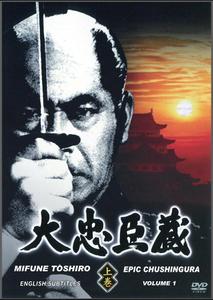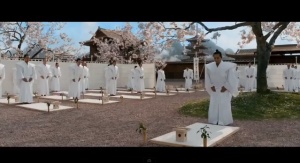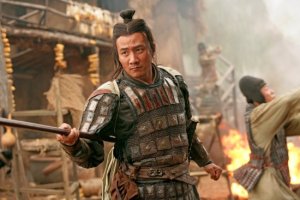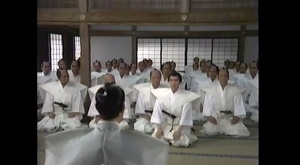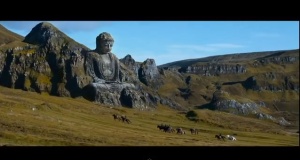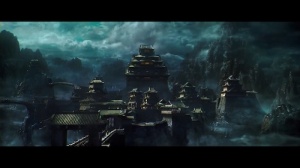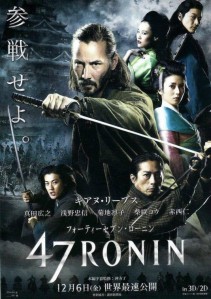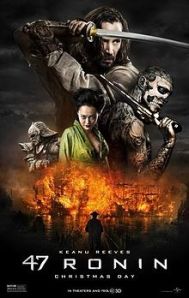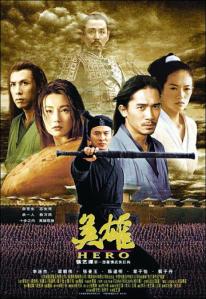There might be some confusion at to what the movie "Like Father, Like Son," is about. Written and directed by Hirokazu Kore-eda, the movie centers on two boys who were switched at birth and how the situation is handled. "Like Father, Like Son" opens at the Laemmle Playhouse 7 and the Royal.
[youtube=https://www.youtube.com/watch?v=pL3MQ9VNjmI]
The movie seems to set up a class comparison along with a nature versus nurture paradigm. Ryota Nonomiya (singer-songwriter Masaharu Fukuyama) is a driven highly paid architect. He and his wife, Midori (Machiko Ono) have taken their son, Keita (Keita Ninomiya) to "audition" for an exclusive private school that Ryota had previously attended. Keita has been coached to have the right answers which may not be true at all.
You might notice that there's some similarity in the names. The kei in Keita means to congratulate or rejoice. The ryo in Ryota means good. The ta in both names means plenty. The child playing Keita is actually named Keita; that seems a bit of luck. There's a naming convention in Japanese where one Chinese character from the father's name appears in the son's name. This strengthens the feeling that Ryota feels an important connection with his supposed son.
Midori gets a call from a hospital in her hometown. Eventually, the hospital reveals that Keita is not their child. They introduce them to the parents of their child: Yudai Saiki (Lily Franky) and Yukari Saiki (Yoko Maki). The father's name is almost a comical contrast: Yūdai means grand, majestic. The yū means great leader. (The last names of both parents are also place names).
The Saiki are struggling lower middle class. The father runs his own shop, selling mostly light bulbs, and the family lives above. The mother works part-time at a fast-food ramen store. The child they have been raising, Ryusei (Shogen Hwang) is the oldest of three. The Saiki, particularly the father, seemed to be focused on the financial possibilities and the father, Yudai is crassly often more interested in the food served.
According to the director's notes, Kore-eda noted that while his wife "appeared to transform into a mother" when their daughter was born five years ago, he felt "somewhat estranged." He asked himself, "At what point does a father truly become a father?"
The question about shared blood and time spent together isn't one new to traditional Japanese culture. Should a family not have a son, they used to resolve it by adopting a son. They also might wait until one of their daughters married and take in an adult "son," a mukoyōshi (婿養子). Yoshi, in Japan, can mean both son-in-law and adopted son. The practice hasn't died. According to a recent BBC News article, it continues.
In the interest of full disclosure, my father's youngest brother was sent back from the United States after both parents died in the same year. My youngest uncle was adopted into a related family and took a different last name. Eventually, he returned to the United States and lives in Japan. He has two sets of parents.
For this reason, the concept of nature versus nurture is less strong in Japan. The original Japanese title suggests this. In Japanese, the title is "Soshite chichi ni naru (そして父になる or "Then I Become a Dad"). As any student of Japanese knows, family terms are very important to the Japanese. Someone else's father and my father are different terms: otōsan versus chichi. You don't need a possessive adjective to differentiate. It is built into the language. With the influx of English, the word パパ could have also been used, but I think it would have meant something else. When talking about your father in Japanese you'd say something like "Chichi wa yasashii" (my father is kind, but when speaking to him, and using an address term, you might say "Tōsan." Yet the Chinese character used would be the same: chichi 父versus otōsan お父さん.
Kore-eda sets up a contrast between a modern family, the Nonomiya, who sleeps on Western-style beds in a home that is "like a hotel" and a merchant family squeezed into a home/workplace that has tatami. Because he works at home, the father has time for his kids and the son must take care of his siblings while the parents run the business.
The movie is about Ryota becoming a dad, because most men can father a child, but not everyone sticks around to be a dad. Here, Kore-eda puts the responsibility fully on Ryota because when this problem crops up, his boss encourages him to slow down and take time to sort out his family situation.
As with his 2004 "Nobody Knows"(誰も知らない) and the 2011 "I Wish" (奇跡), Kore-eda is concerned with the conundrums of the modern family but in "Like Father, Like Son," the focus is not on the children, but on the fathers and, in particular, the kind of father who doesn't find time for his children. It's a question we've asked in America as well, most poignantly in the Harry Chapin song, "Cat's in the Cradle."
"Like Father, Like Son" won the Cannes Jury Prize and is nominated for Best Picture by the Japanese Academy.
"Like Father, Like Son" is currently playing at the Pasadena Laemmle Playhouse 7.



